|
|
|
Sort Order |
|
|
|
Items / Page
|
|
|
|
|
|
|
| Srl | Item |
| 1 |
ID:
075406
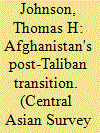

|
|
|
| 2 |
ID:
110792
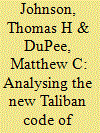

|
|
|
|
|
| Publication |
2012.
|
| Summary/Abstract |
Periodically, Afghanistan's Taliban leadership formally issues Layeha or 'codes of conduct' for their fighters and supporters. Layeha offer important insights into the Afghan Taliban's objectives, strategies and the psyche/perspective of Taliban leadership. This article presents an analysis of the Taliban's code of conduct and examines what Layeha tell us about Taliban objectives, strategy and organization. Such information would seem particularly important as the United States as well as its coalition allies assess their Afghan operational strategy as well as exit strategy from Afghanistan. This analysis of the Layeha suggests that the Taliban remain most concerned with: chain of command principles preventing the fragmentation of the various Taliban networks; obtaining and maintaining public support by winning 'hearts and minds' of local residents; ensuring enough fighters remain engaged in combat; and galvanizing the perception that the Taliban represent a capable, desirable and fair alternative to the current Afghan political establishment.
|
|
|
|
|
|
|
|
|
|
|
|
|
|
|
|
| 3 |
ID:
103964
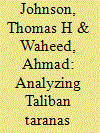

|
|
|
|
|
| Publication |
2011.
|
| Summary/Abstract |
This article describes and analyzes a little understood Afghan Taliban propaganda tool: chants or taranas. These melodic refrains effectively use historical narratives, symbology, and iconic portraits. The chants are engendered in emotions of sorrow, pride, desperation, hope, and complaints to mobilize and convince the Afghan population of the Taliban's worldview. The chants represent culturally relevant and simple messages that are communicated in a narrative and poetic form that is familiar to and resonates with the local people. They are virtually impossible for the United States and NATO to counter because of Western sensitivities concerning religious themes that dominate the Taliban narrative space, not to mention the lack of Western linguistic capabilities, including the understanding and mastering the poetic nature of local dialects.
|
|
|
|
|
|
|
|
|
|
|
|
|
|
|
|
| 4 |
ID:
107872


|
|
|
| 5 |
ID:
062491
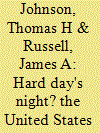

|
|
|
| 6 |
ID:
168260
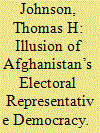

|
|
|
|
|
| Summary/Abstract |
This article is the latest in a series of published articles systematically examining Afghan Presidential and legislative elections. Structural problems including fraud, ethno-linguistic block voting, and the Single Non-Transferable Vote have had significant impacts on the development of Afghan democratic elections. The challenge now facing the current Afghan government and future elections is the daunting task of uniting the Afghan people while not repeating the electoral mistakes of the past. The tricky balancing act of fostering an overarching national identity without being perceived as privileging particular identities requires strong leadership and a willingness to challenge traditional ethnic, linguistic, and religious norms when need be. Karzai and Ghani Administrations have seriously failed relative to this dynamic.
|
|
|
|
|
|
|
|
|
|
|
|
|
|
|
|
| 7 |
ID:
164153
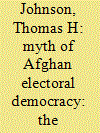

|
|
|
|
|
| Summary/Abstract |
This article systematically assesses the 2014 Afghanistan Presidential Election, the first transfer of power from President Hamid Karzai to an elected successor, using provincial voting data as well as explicit data from polling centers. The analysis finds unusual voting results in the April election, where no candidate received 50%+1 votes required by the Afghan constitution, versus the voting results realized for the June ‘runoff election.’ As in other Afghan voting analyses, this article finds voting based on ethno-linguistic preferences, and interestingly found Dr. Ashraf Ghani receiving almost all the swing votes in the runoff election even though the other leading candidate from the April election all endorsed Dr. Abdullah Abdullah. More importantly, however, the research presented here clearly finds extremely strange voting patterns. For example, the polling data center analysis finds 606 polling places where Ghani received all 600 votes and Abdullah received none and another 900 polling centers that gave virtually all its votes to Ghani. These results in combination with other analyses raise the very real possibility that the election results were illegitimate. The article concludes with a discussion of the implications of the research to future Afghan elections and their processes as well as to the long-standing conflict in the country.
|
|
|
|
|
|
|
|
|
|
|
|
|
|
|
|
| 8 |
ID:
080962
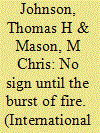

|
|
|
|
|
| Publication |
2008.
|
| Summary/Abstract |
The Pakistan-Afghanistan border area has become the most dangerous frontier on earth, and the most challenging for the United States' national security interests. Critically, the portion of the border region that is home to extremist groups such the Taliban and al-Qaida coincides almost exactly with the area overwhelmingly dominated by the Pashtun tribes. The implications of this salient fact-that most of Pakistan's and Afghanistan's violent religious extremism, and with it much of the United States' counterterrorism challenge, are contained within a single ethnolinguistic group-have unfortunately not been fully grasped by a governmental policy community that has long downplayed cultural dynamics. The threat to long-term U.S. security interests in this area is neither an economic problem, nor a religious problem, nor a generic "tribal" problem. It is a unique cultural problem. In both southern Afghanistan and the tribal areas of Pakistan, rather than seeking to "extend the reach of the central government," which simply foments insurgency among a proto-insurgent people, the United States and the international community should be doing everything in their means to empower the tribal elders and restore balance to a tribal/cultural system that has been disintegrating since the Soviet Union invaded Afghanistan in 1979.
|
|
|
|
|
|
|
|
|
|
|
|
|
|
|
|
| 9 |
ID:
106883
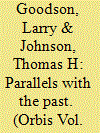

|
|
|
|
|
| Publication |
2011.
|
| Summary/Abstract |
This article assesses seven startling and unsettling similarities between Soviet strategies and tactics in Afghanistan during their Afghan war of 1979-1989 and American coalition strategies and tactics in Afghanistan since October 2001. It concludes with the implications of this dynamic. In particular, the similarities between Soviet and U.S. approaches to Afghanistan that focus on key population centers, reconciliation/reintegration, and the development of "Afghan" solutions to a variety of security concerns are extremely disturbing and, we believe, should be the focus of national attention and debate.
|
|
|
|
|
|
|
|
|
|
|
|
|
|
|
|
| 10 |
ID:
119497
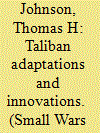

|
|
|
|
|
| Publication |
2013.
|
| Summary/Abstract |
Since 1978, insurgents in Afghanistan have endured a state of constant conflict, facing two occupying forces that have fielded modernized, highly capable militaries with a multitude of numerical and technological advantages over them. The asymmetry of these conflicts drove a rapid cycle of adaptation and innovation on the part of the insurgents that continues today. The Taliban way of war and approach to governance focuses on turning populations against political weakness and fielding simple and effective governance at the local and provincial levels. The Taliban has proven to be a highly adaptive, innovative, and resilient organization, drawing on tactics from conflicts in Iraq, Pakistan, and their own experience in Afghanistan to fight an effective and enduring defensive jihad. The introduction of improvised explosive devices, suicide bombers, and more recently a rising rate of assassinations all demonstrate the Taliban's ability to adapt tactically and innovate at the strategic level. These innovations are even more significant when one considers the cultural, social, and ideological barriers to change and how the Taliban overcame those barriers to include in their arsenal formerly taboo actions, such as suicide bombing. Understanding the innovation shown by insurgents in Afghanistan provides critical insights into the conflict the US-led coalition faces today and how it may be fought tomorrow.
|
|
|
|
|
|
|
|
|
|
|
|
|
|
|
|
| 11 |
ID:
080107
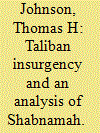

|
|
|
|
|
| Publication |
2007.
|
| Summary/Abstract |
The Taliban has recently re-emerged on the Afghan scene with vengeance. Five years after being defeated in Afghanistan by a US coalition, the resurgent Taliban, backed by al-Qaeda, are mounting an increasingly virulent insurgency, especially in the east and south, near the Afghanistan-Pakistan border. The Taliban now represents a significant challenge to the survival of President Hamid Karzai's government. This article assesses the narrative strategy the Taliban has employed to garner support with the Afghan people. Specifically, this paper assesses the narratives of Taliban shabnamah, commonly referred to as 'night letters' in an effort unravel what the Taliban represents
|
|
|
|
|
|
|
|
|
|
|
|
|
|
|
|
| 12 |
ID:
160041
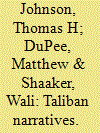

|
|
|
|
|
| Publication |
London, C Hurst and Co.(Publishers) Ltd., 2017.
|
| Description |
xxxvi, 376p.: figures, tablespbk
|
| Standard Number |
9781849048439
|
|
|
|
|
|
|
|
|
|
|
|
Copies: C:1/I:1,R:0,Q:0
Circulation
| Accession# | Call# | Current Location | Status | Policy | Location | IssuedTo | DueOn |
| 059479 | 355.021809581/JOH 059479 | Main | Issued | General | | RF053 | 03-May-2024 |
|
|
|
|
| 13 |
ID:
076211
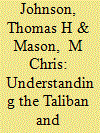

|
|
|
|
|
|
|
|